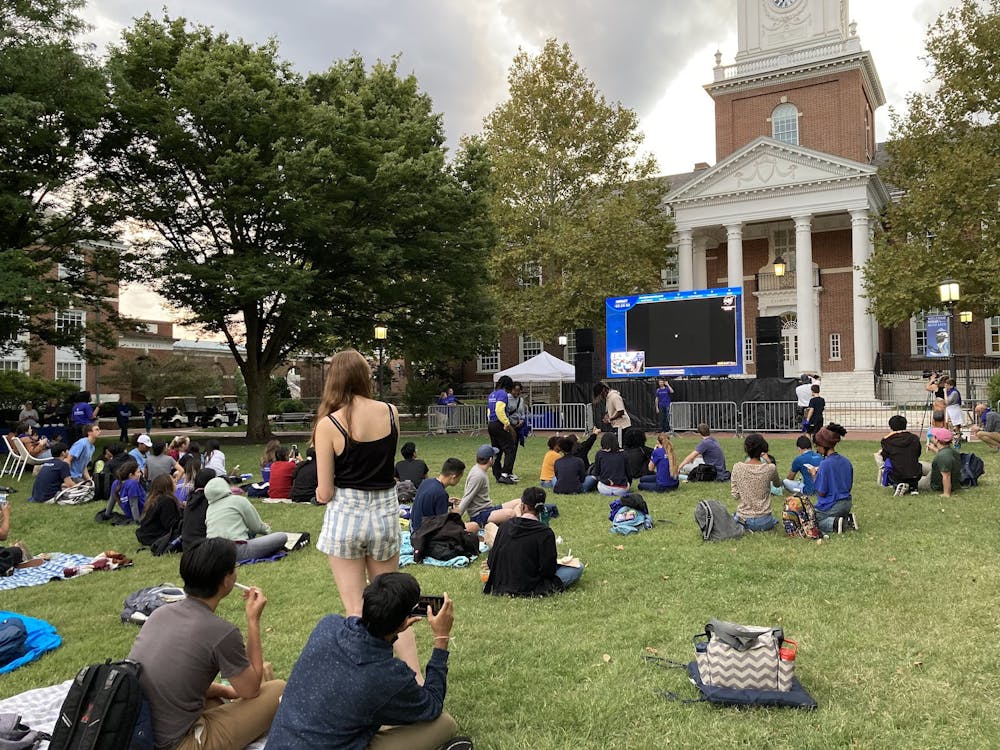Here’s an interview question for you: how would you save humanity if an asteroid was hurtling through space towards our planet?
Students, professors and community members gathered on Keyser Quad on Sept. 26 to view a live broadcast of the Johns Hopkins University Applied Physics Laboratory’s (APL) Double Asteroid Redirection Test (DART), their answer to the question.
Engineering solutions aim for optimization through minimizing costs and pursuing the simplest method — doing barely enough to accomplish the goal without excess. Rather than attempting to destroy the projectile altogether, the APL’s approach is to alter the asteroid named Didymos’ trajectory by just enough so that it misses Earth. The best method, they determined, was to crash a satellite into it.
That’s like saving your teammate in dodgeball by throwing a ball to deflect an incoming one — except your ball is moving at 14,000 miles per hour, you’re spinning around at 1000 miles per hour and your target has a diameter of 500 feet in the vast expanse of space.
At the event, Keyser Quad was setup with a large panel screen pitched in front of the steps of Gilman Hall and bubble soccer was available in front of Mergenthaler Hall. T-shirts were also given out to attendees, while space-themed food was served.

COURTESY OF VIGGY VANCHINATHAN
The celebration aimed to raise awareness of the DART mission and promote a sense of community pride surrounding APL’s accomplishments.
Sophomore Rachel Fox noted the importance of sharing this work.
“Planetary defense is one of my dream career goals, so to have it happening right here on campus is amazing,” Fox said.
Sohanjit Ghosh, a second-year PhD student in Mechanical Engineering, spoke about his relevant research regarding impacts on granular materials.
“I basically model what will happen to an asteroid surface when it gets impacted, so exactly this [DART],” Ghosh shared. “When you have an impact, you have a lot of force being generated on the particles, and [they] will crush. Based on that, we can predict what the crater depth will be [and] how much ejecta will be blown out… I’m really excited for this mission.”
Keion Howard, a second-year PhD student in Mechanical Engineering, also expressed his excitement to be there.
“To be at this event is kind of crazy because my future research could be another application of this DART impact… I could use this as inspiration, and my research could impact the next level of literally this,” he said.
As the timer continued counting down, attendees aggregated in front of the screen and claimed seating space on the wet grass. Associate Professor of Earth and Planetary Sciences Kevin Lewis provided commentary on the broadcast as mini cowbells clanged at every minute that passed.
The energy of the crowd grew and cheers echoed through the quad as the live broadcast showed the asteroid inching closer every second. The broadcast displayed the outline of the asteroid's surface, and very soon after, the individual rocks scattered about on the surface. A roar erupted from the crowd as a red screen flashed on the panel, an indication of successful impact.
In an interview with The News-Letter, Lewis commented on the scope and impact of the project.
“It’s been a decade in the planning, and it's been ten months in flight to get to this asteroid. [It was seventeen meters] of its projected target, it was [seven] million miles away… and on top of it, that was all autonomous navigation from the spacecraft,” Lewis said.





